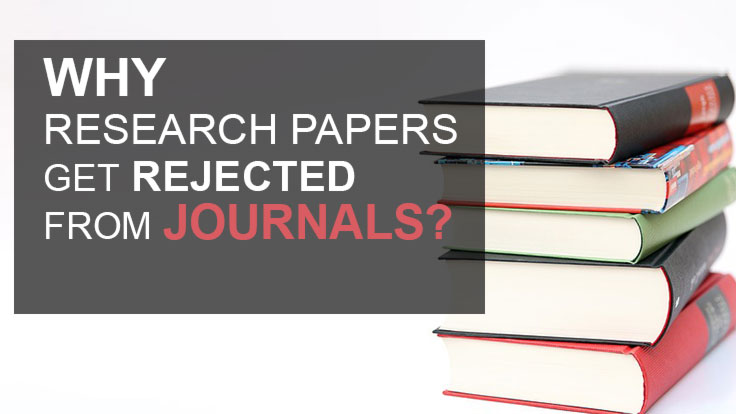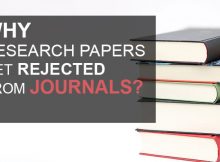
10 main reasons explained!
Getting a research paper published is a dream coming true for a researcher. After years or months of hard work researchers are trying to get the papers published. However, a majority will be disappointed when the papers get rejected.
Many top ranked journals maintain high rejection rates and even getting published in a non-predatory mid range journal is difficult. Knowledge of the researchers/authors on why research papers are getting rejected is very minimal. This article tries to provide knowledge on this particular aspect to researcher out there.
Mismatch between the paper and Journal’s Scope/ Aims
Every journal is lead by Scope and Aims. Scope describes the type and nature of papers that are considered by the journal. If authors submit their work without reading and considering Aims and Scope of a journal, it will lead to desk rejection.
Eg: A journal is not considering Case Studies/ Review Papers for publication, submitting a Case Study/ Review paper may lead to rejection.
Eg: Journals which are specialized to a certain region may not consider research papers written in other contexts ( “European Journal….”, “African Journal…” ) in many occasions.
Failing to follow journal’s formatting guidelines
Different journals are adopting different formatting guidelines. These include font sizes, font type, line spacing, page layout, indenting, table style and many more. Journals which receive a large number of submissions might straightaway reject papers which do not confirm with formatting guidelines.
Issues with referencing style and sources cited
Journals adopt different referencing styles such as APA and Harvard referencing style. Failing to conform with the required style is adding minus points to authors. Also, if the sources cited are not academically sound, rejections are highly probable.
Eg: Journal adopts APA referencing style and the submission is in Harvard style
Reference list is dominated by web articles or sources like Wikipedia
Reference list is dominated by author’s own work
Low number of references
References are missing for certain in-text citations
Issues with Language and Writing style
This is a major reason for rejection of papers from International journals. These issues include grammatical errors, spelling issues, using too much of jargon (which is challenging for readers) and improper flow of the paper.
Eg: The journal require papers to be written in “British English” but the submitted paper is in “American English”
Issues with important elements of the paper
The general structure of a research paper will include Abstract, Keywords, Introduction, Literature Review, Methodology, Analysis, Findings, Conclusions and Future research directions / Limitations. This might slightly differ depending on the field of study or nature of the paper.
– Missing to add keywords
– Failing to define concepts substantially
– Lack of literature support
-Improper methodology
-Issues in sampling
-Unsubstantial discussion
are some of the issues which will lead to rejections without further thought.
Value addition to the journal is less
Many high ranked journals seek novel findings and value addition to their journals. If the research paper do not add new insights to the journal it will lead to rejection.
Plagiarism as a main Ethical violation
Papers which are identified as plagiarized will be rejected by journals and will be treated as a serious offence. Plagiarism is resulted when an author include others’ work as his or her own work. Copying and pasting extracts from other research papers, not providing proper citations lead to plagiarism.
Submitting an already published paper to a Journal
Some authors who are not well aware of the publication ethics try to publish the same paper in two or more journals to increase the number of publications. This is an ethical violation and journals will reject the paper at the initial stage if it is already published.
Failing to provide requested documents
Some of the journals request cover letters, declarations and clearance from co-authors as supporting documents. When the author does not provide these documents, paper will be rejected or not considered for further process.
Not performing the requested revisions in a successful manner
If the paper gets selected from desk review and then revisions are requested after peer-review; authors are require d to revise the paper accordingly and send back to the journal. Failure to address required revisions (to satisfy the reviewers) may result in rejection.
Above are few major reasons for rejections and avoiding these minus points are very important in the journey of getting published.
In a nutshell, every tiny bit of writing is important!! Researchers require to mitigate these kind of issues in their papers to enhance the probability of getting accepted by journals.
Good Luck to all researchers!
By: Yasodara Pemarathne
yasodara@tiikm.com
[wp-review id=”1545″]


Comments are closed.